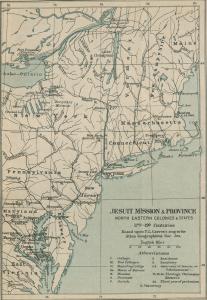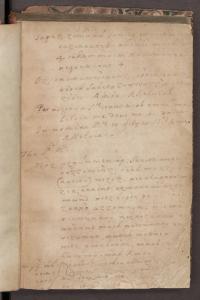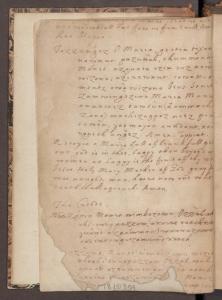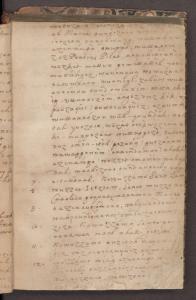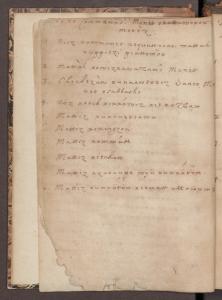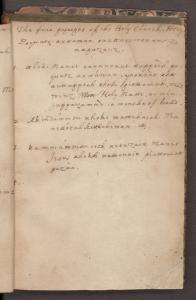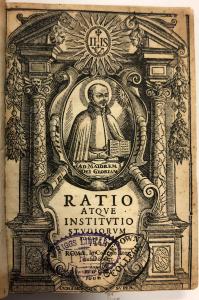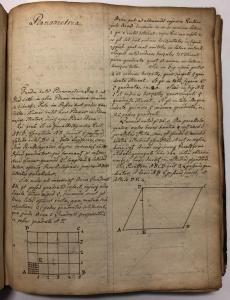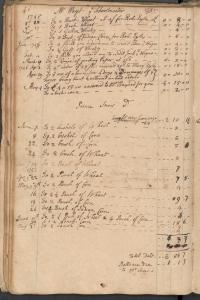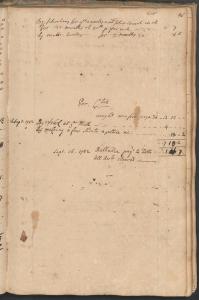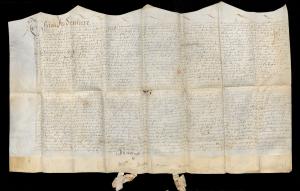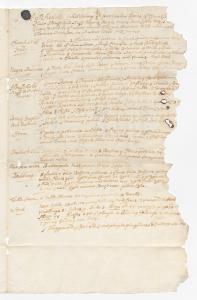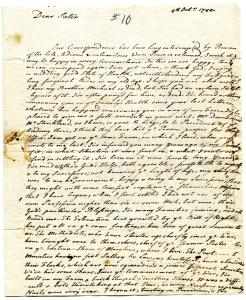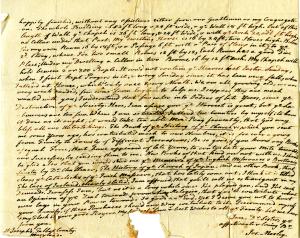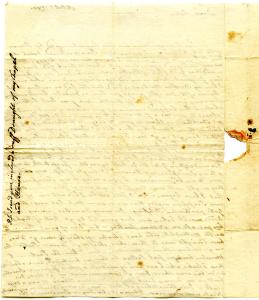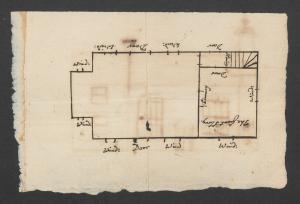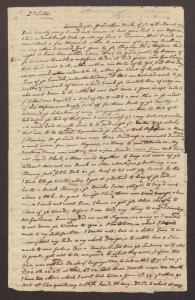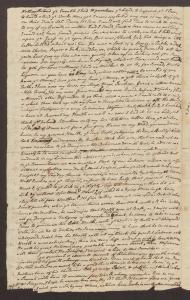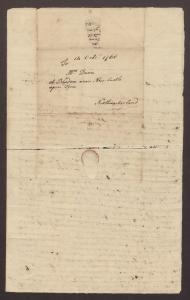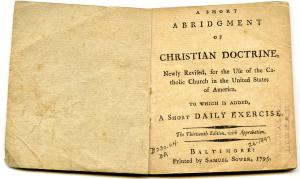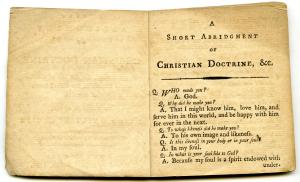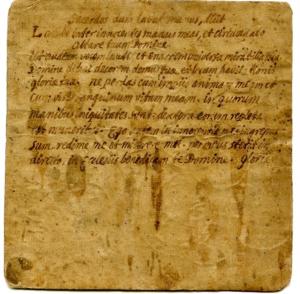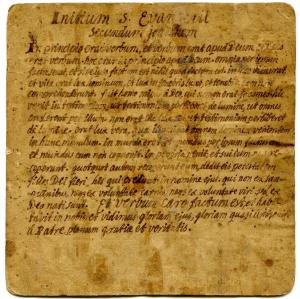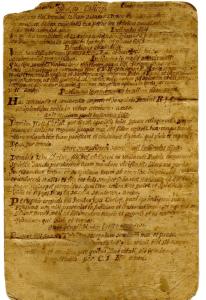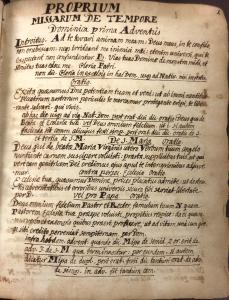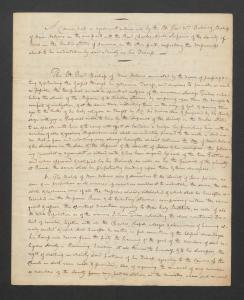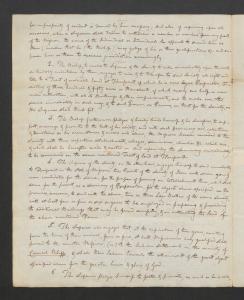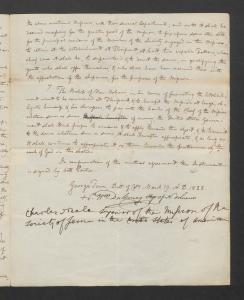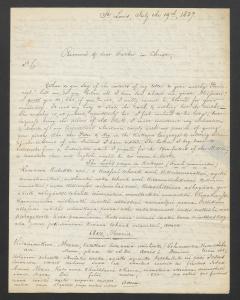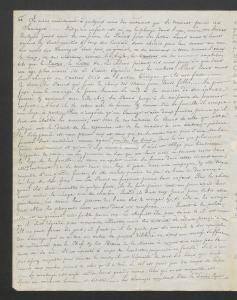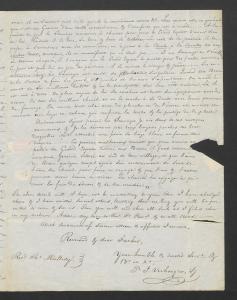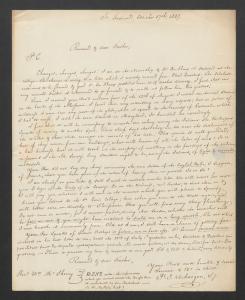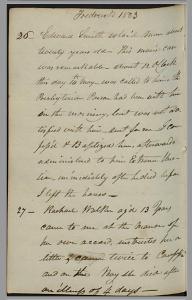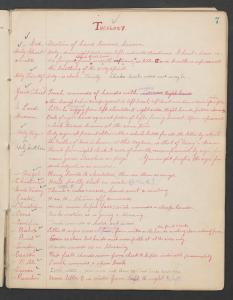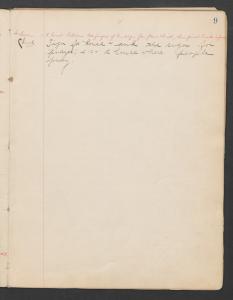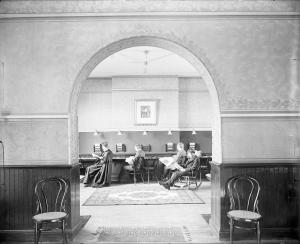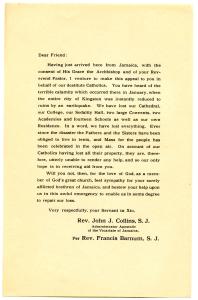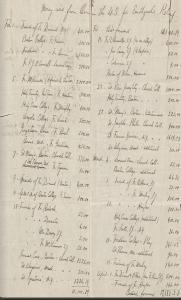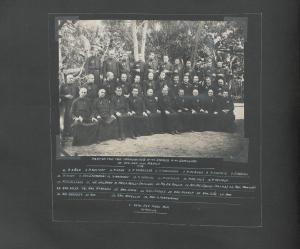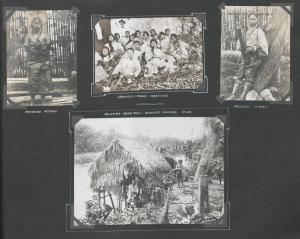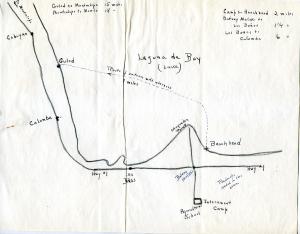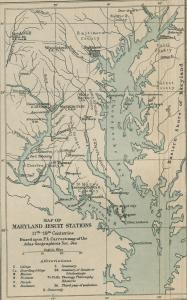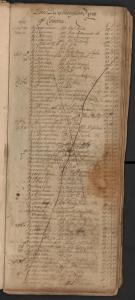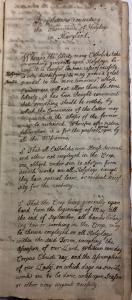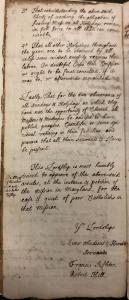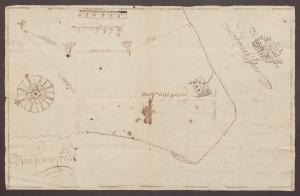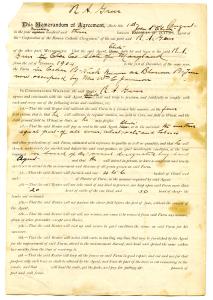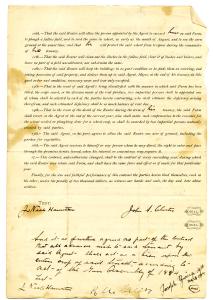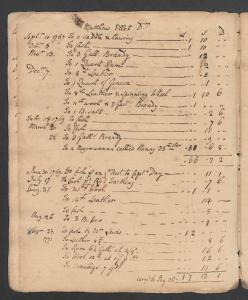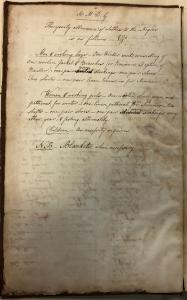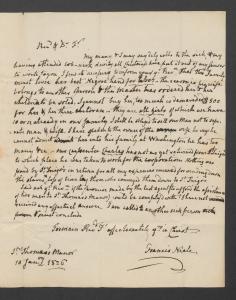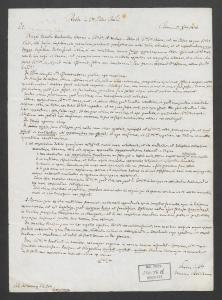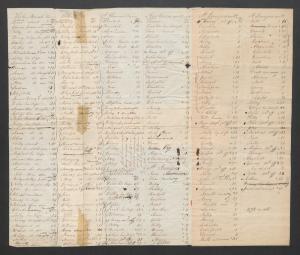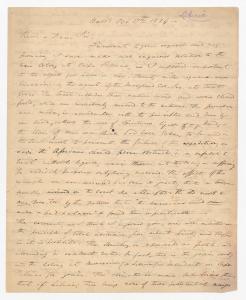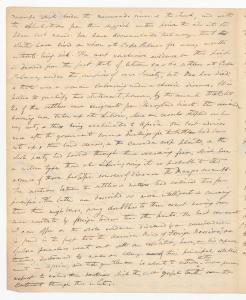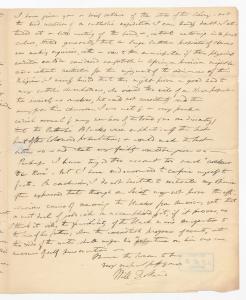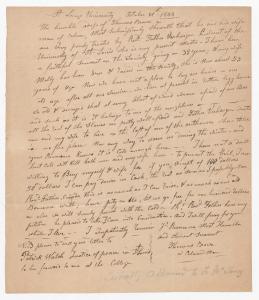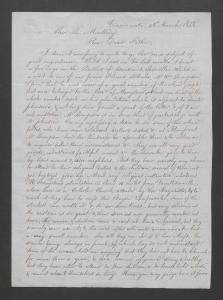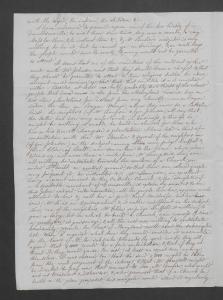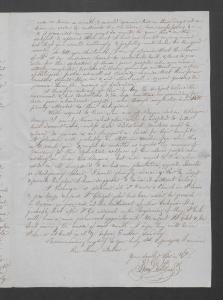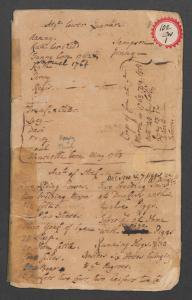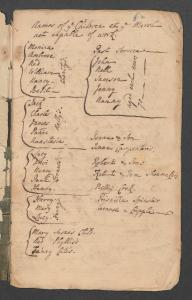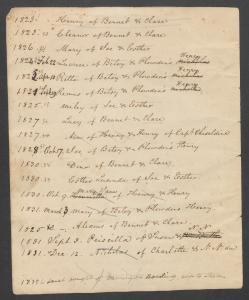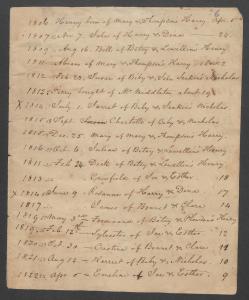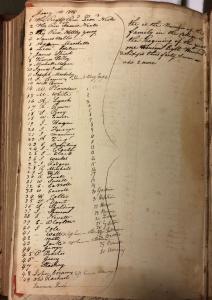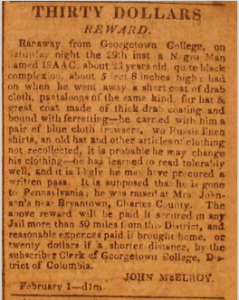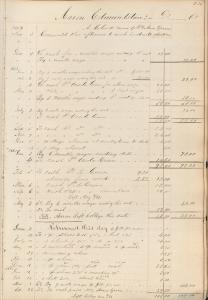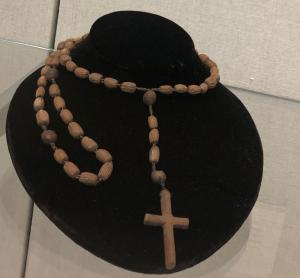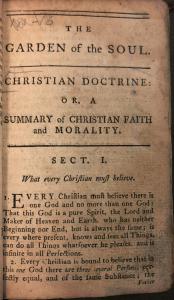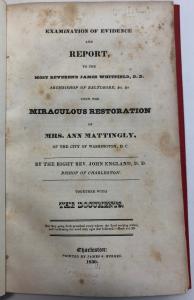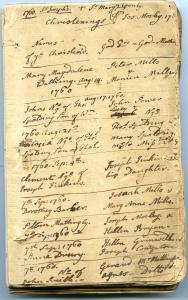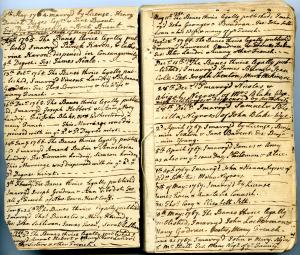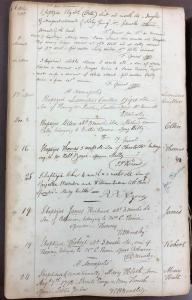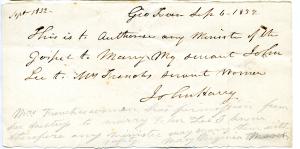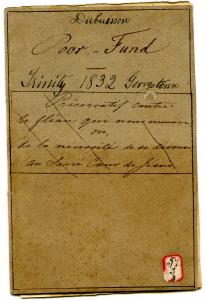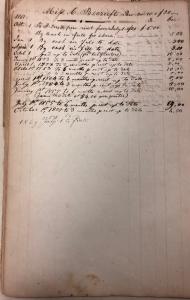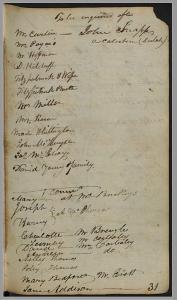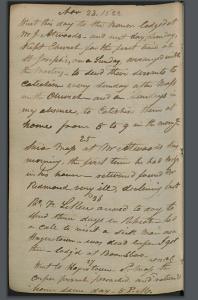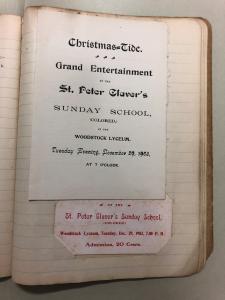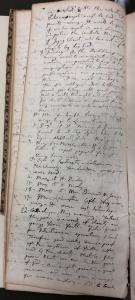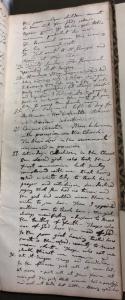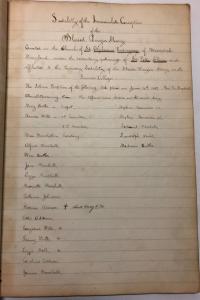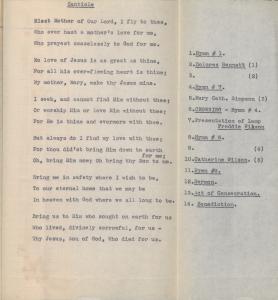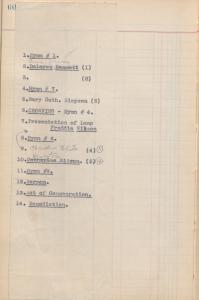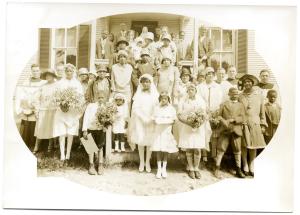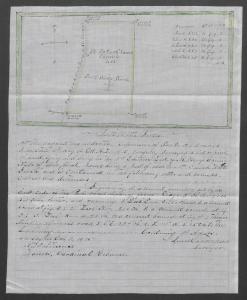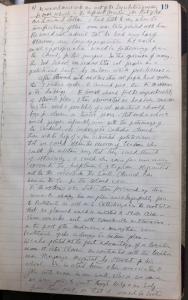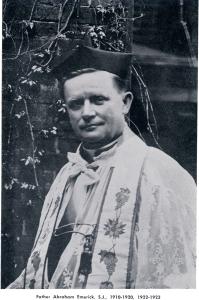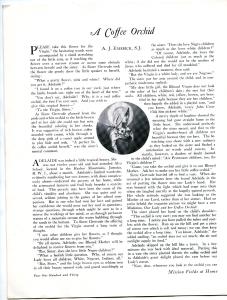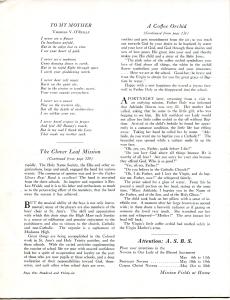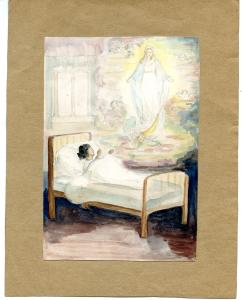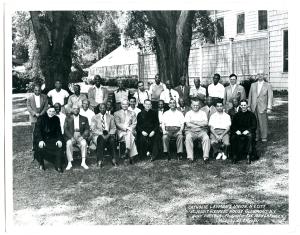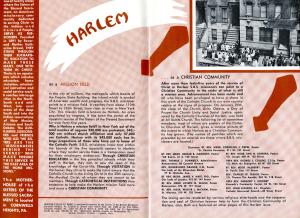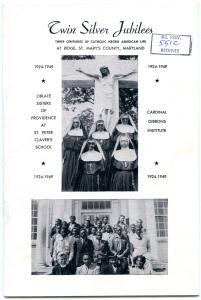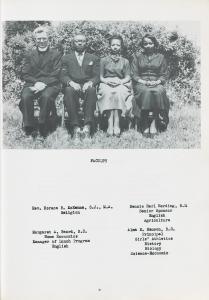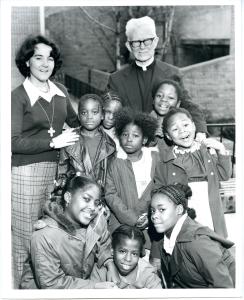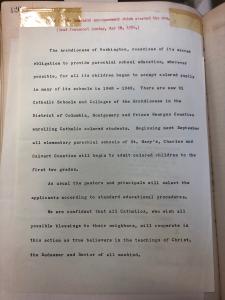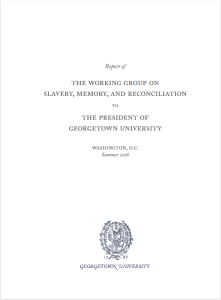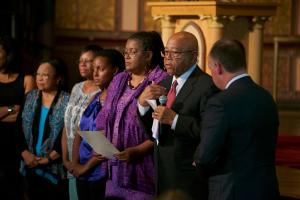This exhibition explores the enduring legacy of the missions established by members of the Society of Jesus in Maryland in 1634. The leaders of the Maryland colony had invited the Jesuits to meet the spiritual needs of settlers who sought to establish a Roman Catholic community. The Jesuits embraced the opportunity to promote Catholic teachings; this work included acts of charity and mercy among women, children, poor working people, and Native Americans. By 1700, the Jesuits also evangelized among Africans and their descendants whose enslavement enabled the tobacco plantations owned by Jesuit missionaries and their patrons to thrive. The persistent faith of some of these enslaved people created a distinctive missionary experience for Maryland Jesuits. After emancipation, Black people remained receptive to church teachings, despite the racial segregation of parishes.
The Slavery, Memory, and Reconciliation Initiative begun by Georgetown University in 2016 acknowledges the harmful legacy of enslavement, especially the sale of more than 272 people in 1838. This initiative has its roots in social justice teachings that emerged in the late 19th century. As Catholic priests began to fight for the rights of workers, several Jesuits in Maryland advocated the end of racial segregation and promoted educational opportunities for Black parishioners. Opponents hostile to these efforts, including members of the Jesuit community, blocked the integration of churches in Southern Maryland until the mid-1960s. The Descendants of those enslaved by the Jesuits (known as the GU272) and Black Catholics, whose faith remained steadfast in a segregated Catholic Church, now seek inclusion as the Jesuits confront the legacy left by a history of slavery and racism.
Mission Growth
The Jesuits of the Maryland Province established missions in 1634 with the intention of ministering to the Catholic settlers and evangelizing among indigenous peoples without any civil restrictions. By 1650, the Maryland colonial assembly implemented civil restrictions similar to those that pushed Catholics from England to British North America. The Jesuits nonetheless persisted, and the missions established in Southern Maryland served as a blueprint for missionary work in the northeastern United States, the Missouri territory, and international missions in Jamaica and the Philippines.
Maryland Province map, 1907
This 1907 map shows the extent of the Maryland Province in the mainland United States. The key on the bottom right shows the types of educational and pastoral institutions established by the Jesuits. The pins indicate which missions are described in this case.
Thomas Hughes, History of the Society of Jesus in North America: Colonial and Federal
Cleveland: Burrows Brothers, 1907
Andrew White, S.J. , engraving in Societas Jesu Apostolorum Imitatrix
This image of the baptism of the Piscataway tayac Kittamaquund in 1640 by the missionary Andrew White, S.J., supports the prevalent notion that the Algonquian peoples of the Potomac region received the Jesuit missionaries peacefully. However, the environmental transformation wrought by the introduction of tobacco plantations pushed the Algonquians to move away from the Potomac region.
By Matthias Tanner, S.J., Prague: 1694
Prayers translated into Piscataway, notes written in Manuale Sacerdotum
Andrew White, S.J., wrote common prayers in Piscataway inside this volume which he used when he performed the sacraments of baptism and marriage, visited the sick, and blessed the settlements of Catholics.
Douai: L. Kellam, 1610
Ratio atque institutio studiorum Societatis Iesu
This volume composed by Jesuit educators from provinces across the globe laid out the educational methods of the Society of Jesus. It emphasized the importance of classical subjects: Scripture and theology; philosophy, physics, and mathematics; Latin, Greek, and rhetoric.
Rome : In Collegio eisudem Societatis, 1606
Collection of Mathematical Treatises and Notes in Latin and English, c. 1720
Known for his mastery of mathematics, Henry Neale, S.J., relied upon these notes taken from lectures heard at European Jesuit colleges. The Jesuits of British North America used such notes for their own personal reference and teaching.
Henry Neale, S.J., Notebook (GTM-20210619)
Account of the School Master Mr. Wayt, 1745-1746
The Jesuits established a school in Bohemia to educate the sons of Catholic landholders. This page shows the account of school master Mr. Wayt, who taught two members of the Neale family and John Carroll. (See credits on right). The Jesuits hired out two Black men, Ben and Jack, for a total of 7 shillings in partial payment of Mr. Wayt’s salary. (See debits on left.)
Bohemia Day and Account Book, 1735-1761
Archives of the Maryland Province of the Society of Jesus
Deed conveying Newtown Manor, 1668
This deed, executed by William and Temperance Britton, conveyed 850 acres to Henry Pelham, S.J., Superior of the Maryland Mission, in exchange for 40,000 pounds of tobacco. This property in turn became the site of the Newtown house. It included St. Francis Xavier Church as its seat and a profitable tobacco plantation.
Archives of the Maryland Province of the Society of Jesus
Deed of Gift between Superior of Maryland Mission and Thomas Jameson, January 30, 1717
A trustee relationship was established with this deed of gift, which formally transferred ownership of 15 people enslaved at Newtown from William Hunter, S.J., to Thomas Jameson. This deed of gift was one example of legal maneuvers that protected Jesuit property from the enforcement of laws that barred Catholic clerics from owning property.
Archives of the Maryland Province of the Society of Jesus
Sacramental Register compiled by Joseph Mosley, S.J., 1760-1802
As Joseph Mosley, S.J., initiated his mission at St. Joseph’s Church in Talbot County on the Eastern Shore of Maryland, he baptized several people enslaved by local parishioners. He noted their enslavers and their godparents, but took less care with the names of the enslaved individuals themselves.
Archives of the Maryland Province of the Society of Jesus
Drawing of St. Joseph’s Church in Cordova, MD, 1784
Religious toleration after the American Revolution enabled the Jesuits to build churches without fear of repercussions. In a letter sent to his sister on October 4, 1784, Father Mosely included this drawing of St. Joseph’s Church which was completed in 1782 with the help of enslaved laborers.
Joseph Mosely, S.J., Papers
Joseph Mosley to his sister Mrs. [Norah?] Dunn, October 14, 1766
“Our Gentlemen have supplied me with negroes, as many as I wanted, to cut down the woods, and to open a plantation, in which I succeed much to my satisfaction: I doubt not, but in a little time to accomplish my ends & my whole design, & to settle here a place much to our future ease and comfort.”
Joseph Mosley, S.J., Papers
A Short Abridgement of Christian Doctrine, Newly Revised, for the Use of the Catholic Church in the United States of America
This abridged catechism was used by the Goshenhoppen residence in Bally, Pennsylvania. After the Revolution, it became easier to distribute devotional materials.
Thirteenth Edition. Baltimore: Printed by Samuel Sower, 1795
Woodstock Theological Library
Altar Cards and Missal used by Theodore Schneider, S.J., c. 1750
Because of the scarcity of published materials, missionaries created manuscript copies of devotional materials. Father Schneider used these altar cards and missals during his masses when he established a mission in Goshenhoppen, Pennsylvania.
Archives of the Maryland Province of the Society of Jesus
Manuscript Prayer Book in Penobscot (Abenaki) Language by Father Romagné, 1804
After his ordination in 1822, Virgil H. Barber, S.J., attempted to establish a novitiate in Claremont, New Hampshire, with a mission in Old Town, Maine. Father Barber used this prayer book written by French missionary Father Romagne, who also worked among the Penobscots. Attacks upon Father Barber’s character by Protestants led the Province to withdraw support for these missionary efforts in 1827.
Virgil H. Barber, S.J., Papers
Concordat between New Orleans Bishop William DuBourg and Mission Superior Charles Neale, S.J.
“The Bishop of New Orleans cedes & surrenders to the Society of Jesus for ever . . . the absolute & exclusive care of all Missions already established & which shall be hereafter established on the Missouri River & its tributary streams; comprising within the grant & cession, the spiritual direction . . . of the White Population as of the various Indian Tribes inhabiting the above mentioned District of county, together with all the Churches, Chapels, colleges & Seminaries.
. . .
“The Superior of the Society, on the other hand, engages himself to send immediately to Florissant in the State of Missouri two Priests of the Society of Jesus with seven young men candidates for the same, for the purpose of forming an Establishment there, which shall serve for the present, as a seminary of Preparation, for the objects above specified.__ He promises, moreover, to send with the above, two or three Lay Brothers of the same Society, with at least four or five or six negroes to be employed in preparing & providing the additional Buildings that may be found necessary, & in cultivating the land of the above mentioned Farm.”
March 19, 1823
Archives of the Maryland Province of the Society of Jesus
Letter from the Superior of the Missouri Mission to Thomas Mulledy, S.J., July 19, 1837
Encouraged by the success of the Jesuit missions among indigenous people in Missouri, Father Verhaegen enthusiastically shared “The Lord’s Prayer” and “Ave Maria '' translated into Kickapoo.
Archives of the Maryland Province of the Society of Jesus
Letter from the Superior of the Missouri Mission to William McSherry, S.J., October 17, 1837
Peter Verhaegen, S.J., reported that he did not need more Jesuit missionaries to work among the Kickapoo. The Kickapoo chief intended to move since they were “too near the settlements of the whites & that these corrupt the morals of his tribe.” Father Verhaegen recommended that in the future the Jesuits build their missions “among the Indians, of light & moveable materials.”
Archives of the Maryland Province of the Society of Jesus
Record Book of Conversions by John McElroy, S.J., 1819-1832
In this small volume, Father McElroy kept a record that noted the circumstances of the conversions that he performed. From the time of his arrival in Frederick in October 1822 to December 1823 he converted 36 people, including Black individuals (both enslaved and free) and poor immigrants.
Archives of the Maryland Province of the Society of Jesus
Notes by John McElroy, S.J., 1823
“Edward Smith col’d man about twenty years old_ This man’s case was remarkable_ about 12 o’clock this day 16th May_ was called to him. The Presbyterian Parson had been with him in the morning, but was not satisfied with him_ sent for me. I confessed & Baptized him, afterwards administered to him Extreme Unction_ immediately he died before I left the house.”
Record Book of Conversions
Archives of the Maryland Province of the Society of Jesus
Journal of John McElroy, S.J., 1830-1840
Father McElroy recorded his daily activities in his journals. His pastoral work included sermons, Masses, and visits to the sick parishioners of missions in western Maryland near the C & O Canal and farms along the Pennsylvania border.
Archives of the Maryland Province of the Society of Jesus
Journal of John McElroy, S.J., August 15, 1831
“Called upon by the Superintendent of the Rail Road this evening to accompany him to New Market where the Irish laborers & Blacks had a quarrel_ Happily I succeeded in making peace_ The Prest and Directors of the Company expressed their approbation by a letter accompanied with a present of $100_”
Archives of the Maryland Province of the Society of Jesus
Sign language dictionary found in a records book for the Maryland Institution for the Deaf and Dumb, Frederick, 1885
A mission, instituted in 1881, provided religious instruction to the deaf students attending the Maryland Institution for the Deaf and Dumb. The novices of Frederick developed this dictionary so that they could communicate theological terms.
Archives of the Maryland Province of the Society of Jesus
Library at the St. Stanislaus Novitiate in Frederick, c. 1900
Between 1834 and 1903, novices intending to join the Maryland Province began their theological studies at the St. Stanislaus Novitiate in Frederick.
Photograph by John Brosnan, S.J.
Brosnan Photographic Collection
Woodstock Theological Library
Postcards illustrating the damage of the 1907 Earthquake in Jamaica
Jesuit missionaries in Jamaica sent postcards to their communities in the northeastern United States to illustrate the destruction of their mission by an earthquake in 1907. This postcard shows the remains of Holy Trinity Cathedral in Kingston.
Archives of the Maryland Province of the Society of Jesus
Appeal for donations by American Catholics for relief following the Jamaican earthquake, February 5, 1907
A circular letter written by John J. Collins, S.J. and Francis Barnum, S.J. describes the destruction of the mission at Kingston, which included a cathedral, sodality hall, college, two academies, fourteen schools, two convents, and the Jesuit residence.
Francis Barnum, S.J., Papers
Funds donated for Jamaican relief, February-April 1907
This financial statement shows that the communities of the Maryland-New York Province contributed $17,188 in response to the financial appeals from Jamaica during the months after the earthquake.
Archives of the Maryland Province of the Society of Jesus
Photo Album: Views of the Philippine Islands
The Jesuit Communities of the Ateneo and the Seminary in Manila
The Indigenous People of Mindanao
The Spanish withdrawal from the Philippines and the takeover by the U.S. government created extreme political instability and widespread poverty among the Filipino peoples. Jesuit missionaries from the Maryland Province became part of the religious communities that evangelized among the culturally diverse islands. Dozens of languages are spoken in Mindanao, located in the southern region of the Islands. The people included in these photos spoke distinctive languages: Manobo, Bagobo, and Tagal.
Woodstock College Archives
Diagram of U.S. Army Plan to rescue Los Baños Internment Camp, February 1945
On July 8, 1944, the Japanese Army captured 78 Jesuit missionaries in the Philippines and took them to the Los Baños Internment Camp on the south shore of Laguna de Bay, approximately 40 miles from Manila. This diagram shows the plan of the U.S. Army to transport internees across the bay to Gulod, a plan successfully executed on February 23, 1945. 750 former internees had returned to California by the beginning of April 1945.
Woodstock College Archives
Plantations as Missions
The Jesuits of Maryland financially supported their missions by acquiring large tracts of land in the Chesapeake region to produce tobacco for export to Europe. As planters, the Jesuits enslaved people of African descent to cultivate these fields and rented out tracts to tenant farmers. As missionaries, the Jesuits sought the conversion of the people they enslaved and favored Catholics as tenants. Their sale of more than 272 people in 1838 led them to expand their use of tenant farmers, a system that endured until the Jesuits gave up their agricultural operations in the mid-twentieth century.
Map of the Maryland Jesuit Stations, 17th-19th Centuries
The Jesuits acquired large tracts of property to establish mission residences on plantations that produced tobacco and financially supported their work. These properties with their dates of establishment include: St. Inigoes (1637), St. Thomas Manor (1649), Newtown (1668), Bohemia (1704), White Marsh (1728), and St. Joseph’s Church (1765).
Thomas Hughes
History of the Society of Jesus in North America: Colonial and Federal
Cleveland: Burrows Brothers, 1907
Records of slave ship Margaret, 1718
Under the heading Laus Deo Maryland (Praise God Maryland), planter-merchant James Carroll recorded the sale of people seized in Sierra Leone and conveyed on the ship Margaret to Annapolis in 1718. When he died in 1729, Carroll bequeathed the plantation White Marsh and 30 enslaved people to the Jesuits.
James Carroll Daybook
Archives of the Maryland Province of the Society of Jesus
Regulations concerning the observance of Holydays in Maryland, 1722
Maryland Jesuits included enslaved people in their ministry, but they accommodated their religious practices to ensure the success of the emerging tobacco economy. In 1722 Maryland Jesuits proposed rules to ecclesiastical authorities in London that exempted the mission from the requirement that Catholics refrain from manual labor on Sundays and other holy days. After its approval by the Vicar Apostolic, these rules applied mostly to enslaved laborers.
Old Records Book
Archives of the Maryland Province of the Society of Jesus
Survey of Blossom Point Farm on Cedar Point Neck, May 12, 1712
The Jesuits offered leases for the life of a farmer and an heir on tracts of 200-500 acres on Cedar Point Neck, part of St. Thomas Manor. Its rich soil enabled tenants to pay annual rent of 500-1,000 pounds of tobacco. The security of these individual leases fostered a sense of community among tenants until the Jesuits opted for shorter contracts after the American Revolution.
Archives of the Maryland Province of the Society of Jesus
Tenant Contract for Blossom Point Farm on Cedar Point Neck, January 1, 1904
Twentieth-century rental agreements did not provide long-term security for tenants. In this agreement, R.A. Green agreed to provide one-third of his produce and maintain the land and buildings of Blossom Point. Most tenant farmers borrowed money from the Jesuits before planting, to cover the costs of supplies. These advances acted as a lien on the crops so that a poor harvest, often due to climatic conditions, could lead to eviction.
Archives of the Maryland Province of the Society of Jesus
Account of Tenant Matthew Ellet, 1767-1769
The account of tenant farmer Matthew Ellet shows his payment to the Jesuits of St. Inigoes in the form of corn and tobacco for market, in addition to cash. The supplies charged to him included liquor, leather, and a spinning wheel. The Jesuits also provided ownership of an enslaved person, Nanny, for the approximate sum of £58.
St. Inigoes Tenants’ Account Book, 1764-1801
Archives of the Maryland Province of the Society of Jesus
Account record of Mingo George, an enslaved man
This account record illustrates the ambiguities of status and race in eighteenth-century Maryland. Identified as an enslaved person in other records, Mingo George was nonetheless provided a £10 per year wage which he used to purchase clothing, fabric, shoes, and rosary “beads.” The moniker “Mingo” likely referred to his ethnicity, although it is unclear whether it referred to African or Native American heritage.
St. Inigoes Tenants’ Account Book, 1764-1801
Archives of the Maryland Province of the Society of Jesus
Clothing provisions for people enslaved at Bohemia, 1790-1791
Father Francis Beeston, Superintendent of Bohemia, kept a record of the provisions distributed to men, women, and children of working age at Bohemia.
Bohemia Records Book, 1790-1802
Archives of the Maryland Province of the Society of Jesus
Bohemia Records Book, 1790-1802
A.M.D.G.
The yearly allowance of clothes to the Negros
is as follows __Viz.t
Men & Working boys - One Winter suit consisting of one woolen jacket and breeches (or Trowsers, at option of master): one pair woolyarn stockings: one pair shoes. __ Two shirts __ one pair linen trowsers for summer.
Women & Working girls - One woolen shirt gown and petticoat, for winter __ one linen petticoat for Summer __ two shifts __ one pair shoes __ one pair yarn stockings every other year; & feeting alternately.
Children- As necessity requires.
N.B. Blankets, when necessary.
Archives of the Maryland Province of the Society of Jesus
Diagram of St. Inigoes, approximately 1823
The site granted to Andrew White, S.J., when he arrived in 1634, St. Inigoes occupied a strategic position on the mouth of the Potomac River. Brother Joseph Mobberly’s remembrances and expositions emphasize St. Inigoes’ agricultural and maritime resources. His illustration includes a depiction of St. Ignatius Church, the seat of the St. Inigoes community.
Memoranda
Joseph Mobberly, S.J., Papers
St. Ignatius Church, 1934
Photograph by John Brosnan, S.J.
John Brosnan, S.J., Photographic Collection
Woodstock Theological Library
St. Inigoes before the 1875 fire, from an old painting
Photographs by John Brosnan, S.J.
John Brosnan, S.J., Photographic Collection
Woodstock Theological Library
Superior at St. Thomas Manor decides to sell a productive laborer, January 13, 1826
In this letter to Mission Superior Francis Dzierozynski, S.J., Francis Neale, S.J., explains that he must sell the most productive laboring man at St. Thomas Manor to avoid separation from his wife and three daughters, because their owner intended to sell them. Father Neale found the asking price of $500 for the wife and children too steep, as the Jesuits had already enslaved 10 or 12 girls at the plantation.
Archives of the Maryland Province of the Society of Jesus
Francis Neale, S.J., to Francis Dzierozynski, S.J., January 10, 1826
“I find it necessary to inform you yr Rev That this Family must loose her best Negroe hand for labor. The reason is, his wife belongs to another person & the master has ordered her & her children to be soled. I cannot buy her, too much is demanded $500 for her & her three children - they are all girls of which we have 10 or 12 already in our family. I shall be obliged to sell our man not to separate man & wife. I have spoken to the owner of the wife he says he cannot admit her into his family at Washington he has too many &c.”
Archives of the Maryland Province of the Society of Jesus
Superior General Jan Roothan, S.J., authorizes the sale of enslaved people, December 27, 1836
After years of deliberation, Superior General Jan Roothan granted the Maryland Provincial William McSherry, S.J., permission to sell enslaved people to support the capital investment into its missions. His approval of the sale was conditional: the enslaved people should be sold to owners who would sustain their Catholicism, and the unions of husbands and wives should be preserved.
Archives of the Maryland Province of the Society of Jesus
List of people considered for sale by the Maryland Province [1837-1838]
As the Jesuits planned the sale of the people enslaved by them, they compiled this list showing 272 enslaved residents of White Marsh, St. Thomas Manor, Newtown, and St. Inigoes. They then added notes indicating who ran away, died, or was “married off.” The Georgetown Memory Project has established that approximately 310 people were ultimately included in the sale.
Archives of the Maryland Province of the Society of Jesus
Maryland Colonization Society Agent Proposal to Send Enslaved People from Jesuit Plantations to Liberia, 1834
In this letter , William Erkead described Cape Palmas, a grain-producing region, that the Maryland state legislature purchased as a settlement for free Black people transported from the state under the auspices of the Maryland Colonization Society. The letter was probably written to Maryland Provincial William McSherry, S.J. If so, there is no record of Father McSherry’s response, although his advocacy of the 1838 sale is well-documented.
Archives of the Maryland Province of the Society of Jesus
Letter by William Erkead, Agent of the Maryland Colonization Society October 17, 1834
“I have given you a brief outline of the state of the colony--as to the kind reception of a Catholic expedition I can hardly doubt. I attended at a late meeting of the board, &, without entering into particulars, stated generally that a large Catholic proprietor of slaves was making enquiries, with a view to their emancipation if their physical condition could be considered comfortable in Africa, & provision might be made without restriction for their enjoyment of the ordinances of the Religion. I merely hinted that this might prove a good lead to many Catholic slaveholders, who viewed the evils of a slave population precisely as ourselves, but could not consistently send them away from their churches.”
Archives of the Maryland Province of the Society of Jesus
Letter written by Thomas Brown, a man enslaved at St. Louis University, October 21, 1833
In the only known letter held by Georgetown written by an enslaved person, Thomas Brown wrote to Provincial leadership with a proposal to pay $100 to purchase himself and his wife Molly to secure their freedom. One of the people forcibly taken from White Marsh to help establish the Missouri mission, Brown complained that the rector of St. Louis University mistreated him.
Archives of the Maryland Province of the Society of Jesus
Thomas Brown to [William McSherry, S.J.] October 21, 1833
“I have been a faithful servant in the Society going on 38 years; & my wife Molly has been born & raised in the Society, She is Now about 53 years of Age Now we have not a place to lay our heads in our old age after all our Service. We live at present in rotten logg house so old & decayed that at every blast of wind we are afraid of our lives . . . I am willing to Buy myself & wife free if you Accept of 100 dollars 50 dollars. . . Rev. Father, Consider this is as much as I can raise, & as much as our old Bones are worth; have pity on Us, let us go free for one hundred dollars or else we will Surely perish with the Cold. Oh! Revd Father hear my petition. . .”
Archives of the Maryland Province of the Society of Jesus
James van de Velde, S.J., reports on the conditions of the people sold to Louisiana, March 28, 1848
Father van de Velde of the Missouri Province reported that the people sold to Henry Johnson in Louisiana had little Catholic instruction. He requested funding for a chapel to serve them. Father van de Velde met with the enslaved people because of their family relationships with some of the people enslaved in Missouri. The Maryland Province never provided the funds to support the creation of a church for the people sold by them.
Archives of the Maryland Province of the Society of Jesus
James Van de Velde to Thomas Mulledy, S.J., March 28, 1848
“On my expressing a desire to see some of the colored folks, who have near relations, brothers, sisters &c at Florissant, [a former student] Mr Thompson had the kindness to assemble them & to allow me to inquire into their circumstances &c. They are all very good people, industrious, faithful, moral, &c. - the character given to them by their owners & their neighbors. But they have scarcely any chance to attend to their religious duties, & the children, several of them not yet baptized, grew up without any religious instruction whatever.“
Archives of the Maryland Province of the Society of Jesus
List of People “not capable of work” at White Marsh, c. 1765
The Superintendent of White Marsh, John Lewis, S.J., created this list of enslaved people whom he deemed as unproductive, mostly because of their age. The young children on this list would eventually become laborers. Enslavers regarded the people “past service,” near the age of 70, as dependents whose provisions and care added to the costs of the plantation.
White Marsh Records Book
Archives of the Maryland Province of the Society of Jesus
List of Enslaved Children Baptized at Newtown, 1806-1835
This list of people born and baptized at Newtown by the Jesuits reveals much about the realities of family life within the confines of slavery. Several parents lived on separate plantations as did “Betsy & Plowden’s Henry.” Regardless of these “abroad marriages,” the Jesuits claimed ownership over all the children born to the women enslaved at Newtown. Baptism did not protect a person from the slave trade, as several of these families, such as those led by Joe and Esther and Bennett and Clare, were among those sold in 1838.
Archives of the Maryland Province of the Society of Jesus
The Residents of Georgetown College, 1805-1806
Enslaved laborers cleaned residences, prepared food, and maintained buildings for administrators of Georgetown College. At the beginning of 1805 and 1806, nearly one out of every five residents on campus was an enslaved servant.
Georgetown College Daybook for Ledger C, July 1803-November 1808 (I.AA.1.b.)
Georgetown University Archives
Clerk at Georgetown College offers a reward for the return of Isaac, February 1, 1814
John McElroy, S.J., placed this advertisement in an effort to recover Isaac, a man enslaved by the Jesuits who had run away on January 29, 1814. By the time of its publication, Isaac had been placed in a Baltimore jail, returned to the Jesuits, and then sold to a purchaser from Harford County, Maryland.
The Daily National Intelligencer (Washington, D.C.), February 1, 1814
Sukey Hired by Georgetown College, 1792-1797
In March 1792, William Digges, who claimed ownership of Sukey, received £10 per year by “hiring out” Sukey to Georgetown College. The record does not indicate the type of work she performed between 1792 and 1797, but typically enslaved women prepared food in kitchens, cleaned buildings and furniture, and washed clothing.
Ledger A 1, 1789-1793, I.A.1.a.
Georgetown College Financial Records
Aaron Edmonson Account, 1859-1862
Between 1789 and 1862, Georgetown College owned relatively few enslaved people, but instead participated in the prevalent slave hiring system. For nearly three years, Georgetown paid $12 per month to Aaron Edmondson’s owner Ann Green for “work in the dormitories.” In March 1862, one month before he secured his freedom as provided by the District Compensated Emancipation Act, Edmondson stopped working for the College.
Georgetown College Accounts Journal G, 1838-1873. (I.A.2.e.)
The Devotional Lives of Black Catholics
The pastoral care and religious instruction provided by the Jesuits encouraged Black people to form communities centered on Catholic rituals and devotions. The power dynamics of slavery shaped their participation: priests required the permission of enslavers when they performed the sacraments of Baptism and Matrimony among enslaved people. Black Catholics remained marginalized after achieving freedom, as segregation was practiced within most parishes. The sodalities and Sunday Schools established by Black Catholics without the interference of most white parishioners became integral to the Black community.
Wooden Rosary Beads
Families and communities often came together to say the rosary. Archaeologists have recovered beads at sites throughout Southern Maryland, indicating their widespread use among white and Black Catholics during the 18th century.
Georgetown University Art Collection
The Garden of the Soul or a Manual of Spiritual Exercises and Instructions for Christians who (living in the world) aspire to devotion.
In this prayer book distributed throughout British North America in the mid-18th century, Bishop Richard Challoner recommended that every Catholic family set aside a room in their homes for the performance of the devotions described in this book. Women led these private devotions, a practice that continued into the 19th century.
By Richard Challoner
Philadelphia: c. 1773
Collection of J. Gilmary Shea
Examination of evidence and report to the Most Reverend James Whitfield, D.D., Archbishop of Baltimore. . . upon the Miraculous Restoration of Mrs. Ann Mattingly
In 1824, a small group of Catholics, led by Stephen Dubuisson, S.J., from Holy Trinity Catholic Church in Washington, fervently prayed for the cure of Ann Mattingly, the sister of Washington mayor Thomas Carbery, who was dying of cancer. They timed their devotions to coincide with a Mass said by a German Catholic priest, who purportedly cured blindness and other infirmities. This invocation achieved its intended result, as she woke up without any sign of her cancer. Protestants and Catholics alike questioned the power of devotions. This publication brought together key documents and testimony about the Mattingly miracle.
By the Right Rev. John England
Charleston: printed by James S. Burges, 1830
Baptisms performed by Joseph Mosley, S.J., 1760
When he began his missionary work at Newtown and St. Thomas Manor in 1760, Father Mosley baptized enslaved people. Although implicitly recognizing the families of enslaved people, Father Mosley recognized the primacy of enslavers by recording the names of enslavers but not the surnames of either the baptized or their parents. For example, Father Mosley baptized
“John Ngo [Negro] of Tho Spalding, son of Wm” and “Anastasia Ngo of Thos Spalding, son of Thos” on August 17 and August 25 respectively.
Sacramental Register of Joseph Mosley, S.J., 1760-1802
Archives of the Maryland Province of the Society of Jesus
Marriages performed by Joseph Mosley, S.J., 1764-1767
The laws of colonial Maryland did not recognize the marriages of enslaved people, yet Father Mosley and other missionaries wanted to encourage stable relationships among enslaved people, so they performed the sacrament of Matrimony with the permission of enslavers. Friends and family of the enslaved celebrated these marriages. Father Mosley noted the presence of Black friends and family, as he did on June 21, 1767: “John & Mary. Ngos [Negroes] of Mr. Hall. Tes: Many Negs of ye Family.”
Sacramental Register of Joseph Mosley, S.J., 1760-1802
Archives of the Maryland Province of the Society of Jesus
Baptism of Noble Taylor at White Marsh, November 11, 1832
Fidel Grivel, S.J., baptized Noble Taylor, the newborn son of Moses Taylor and Laisa Dorsey, enslaved people owned respectively by Joseph Evins and the Jesuits of White Marsh. In 1838, the Jesuits sold Noble with his brothers Reverdy, Edward, and William to Henry Johnson of Louisiana, but his parents remained in Maryland.
White Marsh Sacramental Register, 1818-1897
Archives of the Maryland Province of the Society of Jesus
Archbishop Leonard Neale to Father James Lucas in Richmond, April 19, 1816
“I applaud your zeal in instructing the poor Negroes: consider it as a grand point of your duty. Diamonds are sometimes found in dunghills & they are to be taught to live contently & in the honorable state of marriage.
“You cannot marry slaves belonging to different masters without first obtaining leave from both & a promise not to separate man & wife afterwards. – The Lady who is going to Martinique ought to be induced either to leave her servant here or take the husband to the island with her.
“Marriages contracted before a Catholic ministers are not to be remarried because they are valid, thou they be Illicit.”
Archives of the Maryland Province of the Society of Jesus
Liddy Butler sponsors the baptism of Mary Ann Adams, May 17, 1795
In May 1795, Liddy Adams named Liddy Butler godmother for her newborn daughter Mary Ann. Godmothers agreed to provide religious instruction and act as a parent in the event of death or separation, a role that was especially important to the enslaved and free Black community of Georgetown. This baptism was the first of 38 baptisms sponsored by Liddy Butler.
Marriage and Baptismal Register, 1775-1805
Archives of Holy Trinity Church in Georgetown (GTM 820908)
Permits for marriages of enslaved people, 1831-1832
The priests of Holy Trinity Catholic Church would not perform a marriage of enslaved people without signed permits from enslavers.
Archives of the Maryland Province of the Society of Jesus
Poor fund book during the cholera epidemic, 1832
Holy Trinity Church in Georgetown collected funds from white and Black individuals to provide relief to parishioners during the year of the cholera epidemic. Disbursements include purchases of wood and provisions to Black and white parishioners, including Irish immigrants.
Maintained by Stephen Dubuisson, S.J., pastor of Holy Trinity Church
Archives of the Maryland Province of the Society of Jesus
Pew rent account of Caroline Becraft, 1851-1855
Caroline Becraft, the daughter of William and Sarah Becraft, paid rent of $5 every three months. After her father’s death in 1854, she lived with her mother; both women were dressmakers. She was the sister of Anne Marie Becraft, who established a school for Black girls, became one of the first Black nuns, and died in 1833. Georgetown University named a building on campus for Anne Marie Becraft in 2016.
Pew rents (Black members) account book, 1851-1871
Holy Trinity Church Archives, Georgetown (GTM 820908)
Diagram of pew galleries for Black members of Holy Trinity Church, c. 1870
This diagram shows the layout of pews in the balconies rented out to Black parishioners at Holy Trinity Church. From the foundation of the parish, Black parishioners sat in separate galleries or stood during Mass. In 1923, the Black parishioners left Holy Trinity Church and formed their own parish, Epiphany Catholic Church in Georgetown.
Pew Register Records, 1851-1871
Holy Trinity Church Archives, Georgetown (GTM 820908)
Prospectus for St. John’s Female Boarding School, Frederick, Md., c. 1840
The Sisters of Charity established a boarding school for girls aged 8 to 14 in a building adjacent to St. John’s Literary Institute in Frederick, a preparatory school established by the Jesuits in 1829. They offered girls from all over the country the opportunity of a “plain English education.”
Archives of the Maryland Province of the Society of Jesus
Notes on residents of Montevue Asylum in Frederick, June 21, 1897
Novices of the St. Stanislaus Novitiate in Frederick ministered to the residents of the Montevue Asylum which was established by the Maryland Lunacy Commission in 1870. The notes indicate that two women characterized as crazy – Belle Reade and “a negress named Rosie” – were incapable of taking care of their children. The note-taker also stated that a constable could transfer the children to an orphan asylum in Baltimore, as the consent of these mothers was not necessary for that transfer.
Diary of the Montevue Almshouse, Frederick, Md., 1893-1897
Archives of the Maryland Province of the Society of Jesus
Black children taking catechism at St. John’s Church in Frederick, 1826
The 20 Black attendees of Father McElroy’s Sunday School classes at St. John’s Church included enslaved people whose enslavers authorized their attendance (left hand page). Father McElroy also listed people “to be inquired after” who presumably were enslavers who could authorize the attendance of Black people.
First Communion Record Book by John McElroy, S.J., 1822-1827
Archives of the Maryland Province of the Society of Jesus
Journal of John McElroy, S.J., November 23, 1822
“Went this day to the Manor lodged at Mr. J. Atwoods_ and next day, Sunday . . . Church for the first time at St. Joseph’s, on a Sunday, arranged with the masters_ to send their servants to catechism every Sunday after Mass in the Church and on Sundays in my absence, to Catechise them at home from 8 to 9 in the morng. . .”
Archives of the Maryland Province of the Society of Jesus
“Christmas Tide: Grand Entertainment by the St. Peter Claver’s Sunday School,” December 29, 1906
The students of St. Peter Claver’s Sunday School performed a Christmas play annually. In 1906, the show was “packed to the doors” and a “great success.”
St. Peter Claver’s Sunday School Register, 1901-1906
Woodstock College Archives
Diary entries by Livy Vigilante, S. J.
[May 1875]
“22 - Catechism this morning - to teach the poor is a work of charity and springs from faith_ . . . Therefore good works are a proof of the existence of faith informed by charity, that is, they prove that we are in the grace of God_ One might preach a great sermon . . . but to teach the poor negro children cannot be done but for God. . .
. . .
“27_ Saturday_ Catechism in the church one colored girl who took her first communion last Sunday complained with me that having asked a white lady to teach her prayer and catechism, she declined saying that she had no time; and the girl had walked more than a mile to see her_ Then I appointed another one to teach her_ The girl always manifesting a desire to know the truths of faith_ I hope who was of God hear the word of God_ To the poor girl having tasted how sweet is the Lord, wants to know more about_ I hope who eat me shall thirst me more_”
Diary of St. Inigoes House and Mission
Recorded by Livy Vigilante, S.J.
Archives of the Maryland Province of the Society of Jesus
Membership list of the Sodality of the Immaculate Conception, Church of St. Alphonsus Rodriguez, Woodstock, Md., 1889
By the late 19th century, sodalities were the center of devotional life in American parishes in part because they enabled ethnic and racial groups to maintain distinctive religious practices. In 1889, the Black parishioners of the Church of St. Alphonsus Rodriguez of Woodstock formed the Sodality of the Immaculate Conception, which was later renamed St. Peter Claver’s Sodality. This sodality comprised descendants of the people held in slavery by the Jesuits and their Catholic neighbors in Southern Maryland.
Register of the St. Peter Claver’s Sodality, 1889-1922
Woodstock College Archives
St. Peter Claver’s May Day Ceremony Draft Program and Chant, c. 1938 and St. Peter Claver’s Sunday School May Day Procession, May 22, 1927
Like other sodalities across the Archdiocese, the St. Peter Claver Sodality honored the Blessed Virgin Mary with a procession of children. The crowning of Mary with a headdress made of spring flowers was at the center of the celebration. The programs also typically included several prayers said to Mary.
St. Peter Claver’s Sodality Records, May Day Programs, 1932-1943
Woodstock College Archives
Photographer unknown
St. Peter’s Sunday School Diary, 1901-1906
Woodstock College Archives
Social Justice Thought and "The Race Question"
The experience of ministering to the segregated parishes of Southern Maryland transformed the vocations of several Jesuits. After witnessing the social and economic harms of racial prejudice, they dedicated themselves to promoting racial tolerance among Catholics. During the early twentieth century, these Jesuits supported Black Catholics of Southern Maryland who wanted their own churches and schools to meet the needs of their own communities. After these priests moved on from Southern Maryland, they established institutions to confront racism among Catholics and to improve the living conditions of Black people.
The Race Question...
“As conditions improve and the Negro is freed from his present disabilities and white Catholic interest is attracted to this endeavor, so will mission work for the Negro in this country begin to yield results commensurate with the untiring sacrifice and zeal of those who now take part in it.”
John LaFarge, S.J.
The Race Question and the Negro:
A Study of the Catholic Doctrine of Interracial Justice
New York: Longmans, Green and Co., 1943
The first school bus used by St. Peter Claver’s School in St. Inigoes, 1927
Students and faculty of St. Peter Claver’s School photographed in front of the first bus used by the parochial school in 1927, two years after its establishment. The image was used in a slideshow created by the Jesuits of the Ridge community and in promotional publications for the school.
Photographer unknown
Horace McKenna, S.J., Papers (821201)
Survey of St. Peter Claver’s Church property, October 11, 1915
In 1913, Black parishioners Benjamin Biscoe and his wife Sarah Ann Maria Biscoe sold the property that became St. Peter Claver’s Church in St. Inigoes for $10 to the Archdiocese of Baltimore, which had oversight over all parishes in Southern Maryland until the formation of the Archdiocese of Washington in 1939. This sale provided the Black Catholics of St. Michael’s Church in Ridge a place of their own to congregate that was located only five miles from the Jesuit community in Ridge.
Archives of the Maryland Province of the Society of Jesus
Account of meeting on an industrial school for Black students, November 16, 1916
At a well-attended community meeting at St. Peter Claver’s Church (St. Inigoes) in November 1916, Black leaders proposed a non-denominational and state-funded industrial school for Black students. The priests of the St. Inigoes house responded with a counter proposal to establish a Catholic industrial school. They raised the funds with large contributions from the Archdiocese of Baltimore and the Knights of Columbus to found Cardinal Gibbons Institute in Ridge, which opened in September 1924.
St. Inigoes-Ridge House Diary, 1915-1932
Archives of the Maryland Province of the Society of Jesus
Abraham Emerick, S.J., c. 1905
Between 1896 and 1908, Father Emerick worked closely with the Sisters of the Blessed Sacrament, the order founded by Mother Katherine Drexel to work among Black and indigenous people in Jamaica and Philadelphia. During his years at Ridge between 1910 and 1922, Father Emerick served as pastor of St. Peter Claver’s Church and played a leading role in the foundation of the Cardinal Gibbons Institute which was open to Black students from across the nation.
Portrait published in Twin Silver Jubilees
Photographer unknown
“A Coffee Orchid,” by Abraham Emerick, S.J. and Illustration of dying girl and apparition of Blessed Virgin Mary, c. 1929
Abraham Emerick, S.J., wrote several parables for children based on his experiences in Jamaica. “A Coffee Orchid” was the story of Adelaide, a pious Jamaican girl who wondered whether the Blessed Virgin Mary accepted Black people as children of God. After a priest assured her that Mary regarded Black and white people equally, Adelaide contracted a terminal illness and saw an apparition of Mary during the hours before her death.
Mission Fields at Home (May 1929)
Woodstock College Archives
and
Watercolor
Woodstock College Archives
John LaFarge, S.J., c. 1920
This automobile enabled Father LaFarge to respond quickly to the needs of the Black community of St. Inigoes and Ridge. During his years with that community, between 1911 and 1926, he participated in community meetings, served as pastor of St. Peter Claver’s Church (St. Inigoes), and supervised the construction of Cardinal Gibbons Institute. These experiences led him in 1926 to found the Catholic Interracial Council to address the problem of racism in the Catholic Church in the United States.
Photographer unknown
John LaFarge, S.J., Papers
Catholic Laymen’s Union Retreat, July 1-5, 1949
John LaFarge, S.J., moderated spiritual retreats that included Black men, where participants discussed measures that Catholics could take to promote racial toleration. The Black participants of this retreat included physicians, lawyers, sales persons, and students.
Photograph by A.J. O’Keeffe
John LaFarge, S.J., Papers
"Harlem as a Mission Field"
The Christian Community of Harlem, a coalition of New York City pastors moderated by John LaFarge, S.J., sought conversions by making visitations, providing parochial education, and teaching catechism to the residents of Harlem. This mission had first been established by the Sisters more than 45 years earlier.
By Ellen Tarr
Mission Fields at Home (January-February 1959)
John LaFarge, S.J., Papers
Twin Silver Jubilees, 1949
Anniversary publication of St. Peter Claver’s Church and Cardinal Gibbons Institute
This booklet celebrated the faithfulness of Black Catholics as part of the St. Inigoes and Ridge missions from their foundations in 1634. The Oblate Sisters of Providence, a religious order of Black women, staffed the parochial school of St. Peter Claver’s Church.
Archives of the Maryland Province of the Society of Jesus
Faculty of Cardinal Gibbons High School, 1952
This yearbook photo of Horace B. McKenna, S.J., with other faculty members at Cardinal Gibbons High School was taken during the last year of his 20-year tenure at that school. Father McKenna worked with Black faculty members Bennie Earl Harding, Margaret A. Beard, and Alma Henson, who taught Agriculture and Home Economics in addition to English, History, and Science.
The Cardinal
Horace McKenna, S.J., Papers (821201)
Horace McKenna, S.J., with children of St. Aloysius School, c. 1973
After leaving the Ridge community in 1953, Father McKenna spent most of his ministry at St. Aloysius Church in Washington, D.C. He led the fundraising efforts that led to the construction of low income housing project Sursum Corda in 1968.He also organized a group of interfaith leaders to serve lunches to the homeless on a daily basis, a practice that became the foundation of the nonprofit organization So Others Might Eat (S.O.M.E.). After Father McKenna passed away in 1983, St. Aloysius Church established the McKenna Center, which now provides health care, food relief, clothing and other services to people experiencing homelessness.
Photographer unknown
Horace McKenna, S.J., Papers (821201)
"Soup Kitchen Feeds Alcoholics"
This news story on the food line established by Father McKenna and other interfaith leaders on North Capitol and K Streets describes his charitable vision. This organization, which became So Others Might Eat (S.O.M.E), used donations of food and clothes to provide relief for poor people. The skepticism expressed by this journalist was prevalent among Washington residents.
By Lauron Lewis
The Hoya (October 26, 1973)
Horace McKenna, S.J., Papers (821201)
Announcement of integration of parochial schools in Southern Maryland, May 20, 1956
At Mass on May 20, 1956, priests in all churches in St. Mary’s, Charles, and Carroll Counties announced that parochial schools would begin to admit Black students into first and second grades. This directive triggered a series of highly contentious parish meetings, as most parents threatened to withdraw their children from schools. The opposition included Black parents, who feared harassment and violence if their children began to attend white schools.
Great Mills House Diary
Archives of the Maryland Province of the Society of Jesus
The Report of the Working Group on Slavery, Memory, and Reconciliation, Summer 2016
In September 2015, Georgetown University President John J. deGioia convened a group of faculty, staff, and students to examine the involvement of Georgetown with the institution of slavery and to recommend actions that the University can take to reconcile with the groups of people harmed by its actions. The report recommended the creation of academic programs to promote racial justice and the study of the history of slavery and improved accessibility of library resources documenting slavery and race.
Georgetown University Archives
President John J. deGioia addresses the legacy of slavery at Georgetown, September 1, 2016
Though taught in Georgetown undergraduate courses and discussed in writings on the institution, the history of Jesuit slaveholding was not well known outside Jesuit and Georgetown communities before 2015. Members of the Working Group on Slavery, Memory, and Reconciliation resolved that this history should never again be forgotten.
Georgetown Professor Adam Rothman, a member of the Working Group, and students in his classes began to select and digitize documents from the Georgetown University Archives and Archives of the Maryland Province of the Society of Jesus in 2016. These documents now comprise a curated online collection of primary sources, the Georgetown Slavery Archive. The Archive has permanently opened the door into this chapter in Georgetown history.
Photograph by Rafael Suanes/Georgetown University
"There is a disconnect..."
“There is a disconnect between what is known and what is alive – alive in a way which we understand ourselves, our history, and our University.”
Georgetown University President John J. deGioia
September 1, 2016
GU272 Descendant Joseph Stewart asks for inclusion of the Descendants in the Slavery, Memory, and Reconciliation Initiative, September 1, 2016
On September 1, 2016, following the formal acceptance of the Working Group Report on Slavery, Memory, and Reconciliation, GU272 Descendant Joseph Stewart challenged President John J. deGioia, pointing out that the Working Group excluded the voices of Descendants. Mr. Stewart is now the leader of the GU272 Descendants Association, which formed a partnership with the Jesuit Conference of Canada and the United States to establish the Descendants Truth & Reconciliation Foundation.
Photograph by Rafael Suanes/Georgetown University
The Archives of the Maryland Province of the Society of Jesus
The Booth Family Center for Special Collections in Lauinger Library is working with the University and Jesuits USA East to improve access to the Archives of the Maryland Province of the Society of Jesus (MPA). Archivist Cassandra Berman and Digital Production Coordinator Theodore Mallison have been digitizing all documents within the MPA dated before 1900. They have created a new arrangement and description that places at the forefront the history of Jesuit slaveholding in Southern Maryland, including the sale of 1838, that will promote student engagement with the records related to slavery and help Descendants of the GU272 interested in understanding the experiences of their ancestors. Explore the finding aid.
On These Grounds
Lauinger Library is also participating in a digital project “On These Grounds” to develop a method of describing its records that places the lives of the enslaved at the center. Instead of describing the records of enslavement from the perspective of the Jesuits who created them, “On These Grounds” describes the events that involve enslaved people. This project is funded by the Mellon Foundation. The core institutional partners for this project are the University of Virginia and Michigan State University. Other partners include Hampden-Sydney College, Washington & Lee College, University of North Carolina at Chapel Hill, University of Georgia, and Rutgers University. Learn more about On These Grounds.
This exhibition has drawn upon the work of faculty, students, and descendants who have used the Archives of the Maryland Province of the Society of Jesus and related collections.
Special thanks go to the following people who have generously shared their insights into Jesuit life: Adam Rothman and Elsa Barraza Mendoza, editors of the Georgetown Slavery Archive; Sharon Leon, principal investigator of On These Grounds; Laura Masur, principal investigator of Priestly Plantations: An Archaeology of Jesuit Missions in North America; and Kelly Schmidt, fellow at the Center for the Study of Race, Ethnicity, and Equity at Washington University in St. Louis.
For reading by these and other scholars, consult https://bit.ly/MPA-readings.

